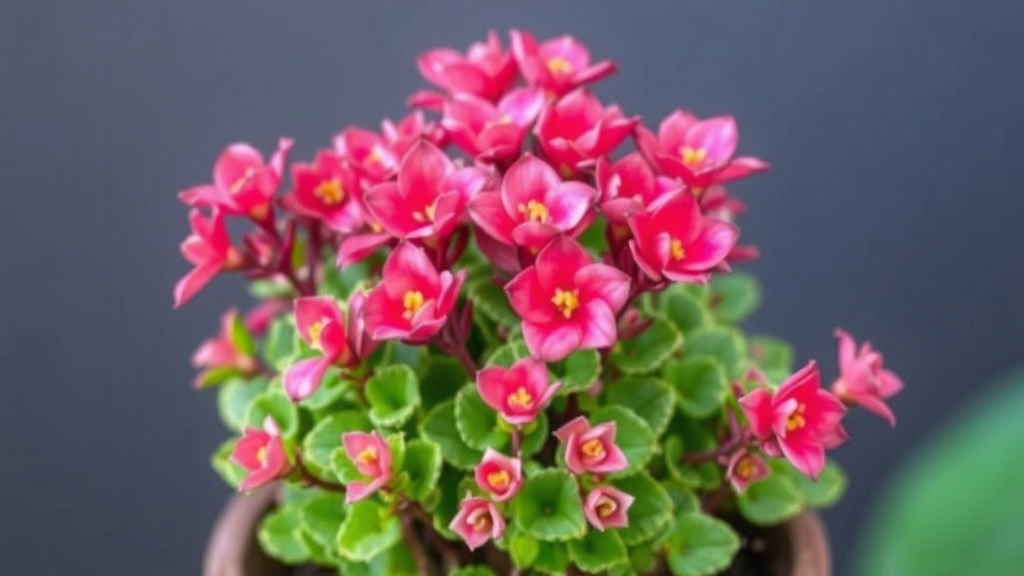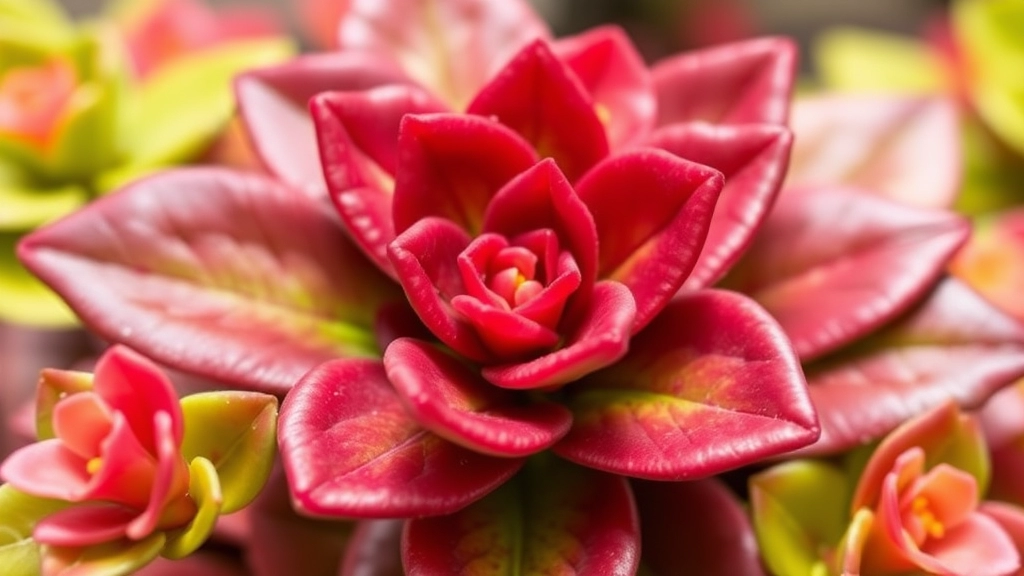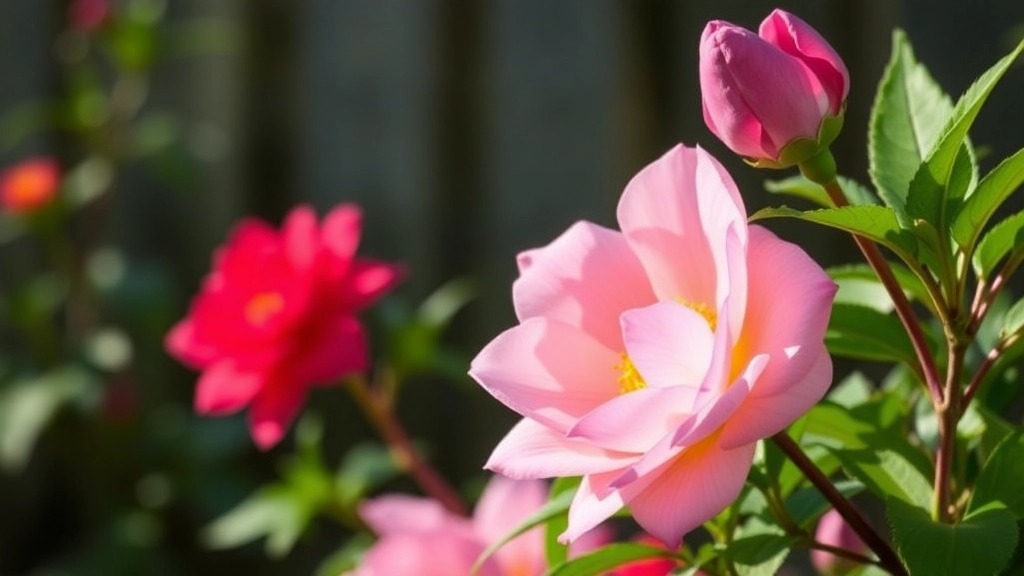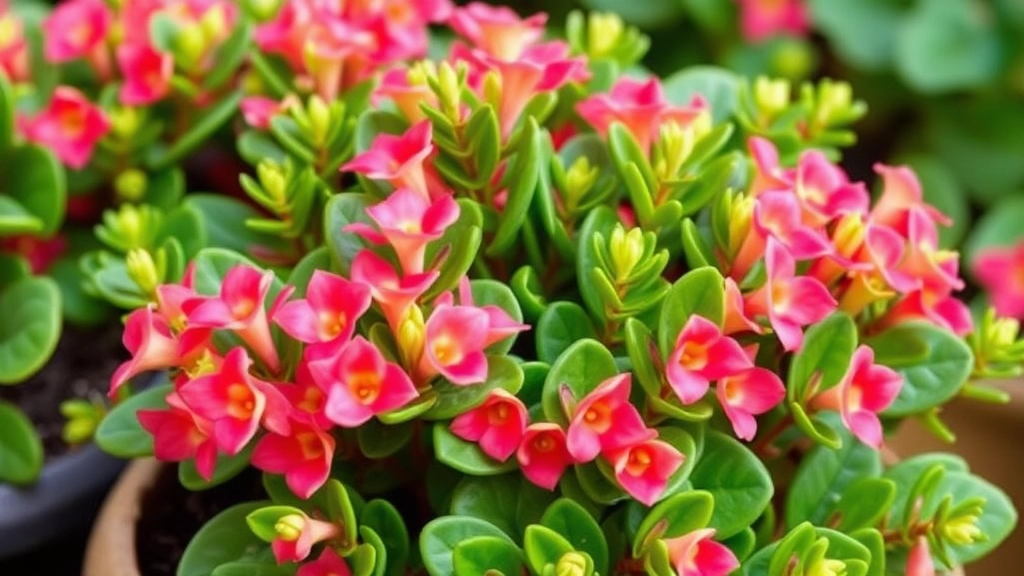How Long Do Kalanchoe Plants Live?
Ever wondered, “How long do Kalanchoe plants live?” Well, you’re not alone. These vibrant succulents can brighten up your space for years if you give them the right care. Typically, Kalanchoe plants can live for several years, but their longevity largely depends on factors like proper watering, sunlight, and pest control.
Maximizing the Lifespan of Your Kalanchoe
To maximise the lifespan of your Kalanchoe, focus on providing optimal conditions. Ensure they get plenty of indirect sunlight, keep the soil well-drained, and don’t overwater. Regular pruning and repotting can also help keep your plant healthy and blooming. With the right care, your Kalanchoe can thrive and bring joy for years to come.
When it comes to nurturing Kalanchoe plants, understanding the factors that influence their lifespan is crucial for any plant enthusiast.
These vibrant succulents are not only visually appealing but also relatively easy to care for. However, several elements can determine how long they thrive in your home.
### Environmental Conditions
**Light:**
Kalanchoe plants flourish in bright, indirect sunlight. Insufficient light can lead to leggy growth, while too much direct sunlight can scorch their leaves. Finding the right balance is essential.
**Temperature:**
These plants prefer a warm environment, ideally between 15°C to 25°C. Extreme temperature fluctuations can stress the plant, leading to a shorter lifespan.
**Humidity:**
Kalanchoe plants are native to arid regions, so they thrive in low humidity. High humidity can increase the risk of fungal diseases, which can be detrimental to their health.
### Watering Practices
**Frequency:**
Overwatering is one of the most common mistakes made by Kalanchoe owners. It’s vital to allow the soil to dry out between waterings. A good rule of thumb is to water only when the top inch of soil feels dry.
**Quality of Water:**
Using distilled or rainwater can be beneficial, as tap water may contain chemicals that can harm the plant over time.
### Soil Quality
**Drainage:**
Kalanchoe requires well-draining soil to prevent root rot. A mix designed for succulents or cacti is ideal, as it allows excess moisture to escape easily.
**Nutrients:**
While Kalanchoe plants do not need frequent fertilization, providing a balanced, diluted fertilizer during the growing season can promote healthy growth. For more specific care tips, you might find the [complete care guide for Kalanchoe Blossfeldiana](https://planthq.org/complete-care-guide-for-kalanchoe-blossfeldiana-succulent/) helpful.
If you’re interested in exploring different varieties, check out the [top Kalanchoe varieties with pink edges](https://planthq.org/top-kalanchoe-varieties-with-pink-edges/), which can add a splash of color to your collection.
How to Maximize the Longevity of Kalanchoe Plants

So, you’ve got your Kalanchoe, and you want it to stick around for the long haul.
What can you do to keep it thriving?
Here are some straightforward tips that’ll help you maximise the longevity of your Kalanchoe plants.
1. Light It Up Right
- Bright, Indirect Light: Kalanchoes love light, but too much direct sun can scorch those lovely leaves. Aim for a spot with bright, indirect sunlight.
- Rotate Regularly: Give your plant a little spin every week. This ensures even growth and prevents it from leaning towards the light.
2. Water Wisely
- Let It Dry Out: Kalanchoes are succulents, which means they don’t need constant moisture. Water them once the top inch of soil feels dry.
- Drainage is Key: Always use pots with drainage holes. Sitting water can lead to root rot, which is a sure way to shorten your plant’s lifespan.
3. Feed Smartly
- Fertilise Sparingly: During the growing season (spring and summer), a balanced fertiliser every month will do wonders. But don’t overdo it; too much food can harm your plant.
4. Keep It Comfortable
- Ideal Temperature: Kalanchoes prefer temperatures between 15°C to 25°C. Keep them away from drafts or sudden temperature changes.
- Humidity Matters: They thrive in low to moderate humidity. If your home is too humid, consider using a fan to keep the air circulating.
5. Watch for Pests
- Stay Vigilant: Regularly check for pests like aphids and mealybugs. Catching them early can prevent a bigger problem down the line.
6. Prune When Needed
- Regular Snipping: Trim off any dead or wilting leaves. This keeps your plant looking fresh and encourages new growth.
Pruning and Repotting Techniques for Healthy Growth
As we delve deeper into the care of Kalanchoe plants, it’s essential to focus on effective pruning and repotting techniques that can significantly enhance their health and longevity.
Why Prune Your Kalanchoe?
Pruning is not just about aesthetics; it plays a vital role in maintaining the plant’s overall health. Here are some key benefits:
- Encourages New Growth: Regular pruning stimulates fresh growth, leading to a bushier and more vibrant plant.
- Removes Dead or Diseased Leaves: This helps prevent the spread of disease and keeps your Kalanchoe looking its best.
- Controls Size and Shape: Pruning allows you to shape your plant, keeping it manageable and visually appealing.
How to Prune Your Kalanchoe
- Timing is Key: The best time to prune is during the growing season, typically in spring or early summer.
- Use Clean Tools: Always use sterilised scissors or pruning shears to avoid introducing pathogens.
- Cut Above a Leaf Node: This encourages new growth from that point.
- Remove Wilting Flowers: Deadheading spent flowers helps redirect energy to new blooms.
Repotting for Healthy Growth
Repotting is another crucial aspect of Kalanchoe care. It ensures that your plant has enough space to grow and access to fresh nutrients.
When to Repot
- Signs of Root Bound: If you notice roots growing out of the drainage holes, it’s time to repot.
- Soil Degradation: If the soil looks compacted or has lost its nutrients, consider repotting.
Steps for Successful Repotting
- Choose the Right Pot: Select a pot that is one size larger than the current one, ensuring it has drainage holes.
- Use Quality Soil: A well-draining potting mix, preferably one designed for succulents, is ideal.
- Gently Remove the Plant: Carefully take the Kalanchoe out of its current pot, loosening any tightly bound roots.
- Place in New Pot: Position the plant in the centre of the new pot and fill with fresh soil, ensuring the base of the plant is level with the soil surface.
By mastering these pruning and repotting techniques, you can cultivate a thriving Kalanchoe that not only looks stunning but also enjoys a longer lifespan. For more detailed advice on caring for specific varieties, check out our expert tips for Kalanchoe Beharensis care or learn about the care and propagation of Kalanchoe Mother of Thousands.
Common Pests and Diseases That Affect Kalanchoe

Kalanchoe plants are resilient, but they are not immune to pests and diseases.
Many plant enthusiasts worry about keeping their Kalanchoe healthy amidst these challenges.
Common Pests:
- Mealybugs
Look like small, white cottony masses.
They suck sap from the plant, leading to yellowing leaves. - Spider Mites
Tiny and often go unnoticed until damage is severe.
They create fine webs and cause stippling on leaves. - Aphids
Small, green or black insects that cluster on new growth.
They can stunt growth and lead to leaf curl.
Diseases to Watch For:
- Powdery Mildew
A fungal disease that appears as white powder on leaves.
It thrives in high humidity and poor air circulation. - Root Rot
Caused by overwatering, leading to mushy roots.
Symptoms include wilting and yellowing leaves.
Preventative Measures:
- Regular Inspection: Check your plants weekly for any signs of pests.
- Proper Watering: Avoid overwatering to prevent root rot.
- Good Air Circulation: Ensure your Kalanchoe has enough space to breathe.
Best Conditions for Flowering and Growth
Are you struggling to get your Kalanchoe to bloom? Understanding the ideal conditions for flowering and growth can make all the difference.
Light Requirements
Kalanchoe plants thrive in bright, indirect sunlight.
- Optimal Positioning: Place your plant near a south or west-facing window.
- Duration: Aim for about 6 hours of light daily. Too much direct sunlight can scorch the leaves.
Temperature and Humidity
Temperature plays a crucial role in the health of your Kalanchoe.
- Ideal Temperature: Keep your plant in a range of 20-25°C during the day and slightly cooler at night.
- Humidity: Kalanchoe prefers moderate humidity. Avoid overly dry or damp environments.
Watering Practices
Watering is a balancing act.
- Frequency: Allow the top inch of soil to dry out between waterings. This typically means watering every 2-3 weeks.
- Technique: Water thoroughly, ensuring excess drains out. Overwatering can lead to root rot.
Soil and Fertilization
The right soil mix and fertilization routine are vital.
- Soil Type: Use a well-draining potting mix, ideally designed for succulents.
- Fertilizer: Feed your Kalanchoe with a balanced, diluted fertilizer every 4-6 weeks during the growing season.
Seasonal Considerations
Kalanchoe has specific seasonal needs.
Tips for Extending Bloom Time

So, you’ve got your Kalanchoe blooming beautifully, but how do you keep those vibrant flowers around for longer? It’s a common worry among plant lovers, and I totally get it. Let’s dive into some straightforward tips that can help you extend that bloom time.
- Light Matters: Ensure your Kalanchoe gets plenty of bright, indirect sunlight. Too much direct sun can scorch those delicate petals, while too little can lead to sparse blooms. Aim for around six hours a day.
- Water Wisely: Overwatering is a killer. Let the soil dry out between waterings. A good rule of thumb is to water when the top inch of soil feels dry. This helps prevent root rot and keeps your plant happy.
- Feed Smart: Use a balanced fertiliser every couple of weeks during the growing season. A liquid fertiliser works wonders. Just remember to dilute it to avoid overdoing it.
- Temperature Control: Kalanchoes thrive in warmer temperatures, ideally between 18°C to 24°C. Keep them away from drafts and sudden temperature changes to maintain those blooms.
- Deadheading: Regularly remove spent flowers to encourage new ones. Just pinch or snip them off at the base. It’s like giving your plant a little nudge to keep going!
- Stress Management: Sometimes, a little stress can boost flowering. Try reducing watering slightly or moving your plant to a less-than-ideal spot for a week. Just don’t overdo it!
By following these simple tips, you can enjoy your Kalanchoe’s blooms for a longer period. It’s all about creating the right conditions and giving your plant the love it deserves.
Signs of Aging and When to Propagate
As Kalanchoe plants age, they may exhibit certain signs that indicate it’s time to consider propagation. Recognising these signs can help ensure that you maintain a vibrant and healthy collection of plants.
Key Signs of Aging:
- Wilting Leaves: If your Kalanchoe’s leaves start to droop or wilt despite adequate watering, it may be a sign of stress or aging.
- Yellowing Leaves: A common indicator that your plant is reaching the end of its life cycle is the yellowing of leaves, which can also suggest nutrient deficiencies.
- Stunted Growth: If your Kalanchoe has stopped growing or is producing smaller leaves than usual, this could indicate that it has reached its maturity.
- Decreased Flowering: A noticeable reduction in blooming can signal that your plant is aging and may need rejuvenation.
When you observe these signs, it’s time to think about propagation to ensure the continuity of your Kalanchoe collection. Propagation can be done through leaf cuttings or offsets, and it’s a straightforward process:
Propagation Techniques:
- Leaf Cuttings: Take a healthy leaf, allow it to callous for a few days, and then place it in well-draining soil. Water sparingly until roots develop. For a detailed guide, check out our step-by-step guide on propagating Kalanchoe Tomentosa.
- Offsets: If your Kalanchoe has produced offsets, gently separate them from the mother plant and pot them individually. Learn more about this technique in our Kalanchoe Mother of Thousands care guide.
By propagating your aging Kalanchoe, you not only preserve the plant’s lineage but also encourage new growth.
FAQs on Kalanchoe Plant Longevity
How long do Kalanchoe plants typically live?
Kalanchoe plants can live for several years with proper care, typically ranging from 2 to 5 years. Their longevity largely depends on the care they receive and their growing conditions.
What kind of light is best for Kalanchoe plants?
Kalanchoe plants thrive in bright, indirect light. Too much direct sunlight can scorch their leaves, so it’s best to place them in a spot where they can receive ample light without being exposed to harsh rays.
How often should I water my Kalanchoe?
Water your Kalanchoe only when the top inch of soil feels dry. Overwatering can lead to root rot, so it’s essential to let the soil dry out between waterings.
What temperature range is ideal for Kalanchoe plants?
Kalanchoe plants prefer temperatures between 15°C to 25°C. Keep them away from drafts and sudden temperature changes to ensure their health and longevity.
How can I prevent pests on my Kalanchoe?
Regularly inspect your plants for signs of pests such as mealybugs, spider mites, and aphids. Early detection and treatment can prevent infestations. Ensuring good air circulation and proper watering can also help keep pests at bay.
What should I do if my Kalanchoe gets root rot?
Root rot is usually caused by overwatering. If you notice symptoms like wilting and yellowing leaves, remove the affected parts and repot the plant in fresh, well-draining soil. Ensure the new pot has drainage holes to prevent water from sitting at the bottom.
How can I extend the bloom time of my Kalanchoe?
To extend bloom time, provide your Kalanchoe with plenty of bright, indirect sunlight, water wisely, and use a balanced fertilizer during the growing season. Regularly deadhead spent flowers to encourage new blooms.
Is it necessary to rotate my Kalanchoe plant?
Yes, rotating your Kalanchoe plant weekly can promote even growth and prevent it from leaning towards the light source. This ensures that all sides of the plant receive adequate light.
How often should I fertilize my Kalanchoe?
Fertilize your Kalanchoe sparingly during the growing season (spring and summer). A balanced fertilizer once a month is sufficient. Be careful not to over-fertilize, as too much can harm the plant.
What are common diseases that affect Kalanchoe plants?
Common diseases include powdery mildew, which appears as white powder on leaves and thrives in high humidity, and root rot, which is caused by overwatering. Ensuring proper air circulation and watering practices can help prevent these issues.
References
-
Kalanchoe Plant Care: How To Grow A Kalanchoe
-
How to Grow and Care for Kalanchoe
-
Kalanchoe: How to Grow and Care for Kalanchoe Plants
